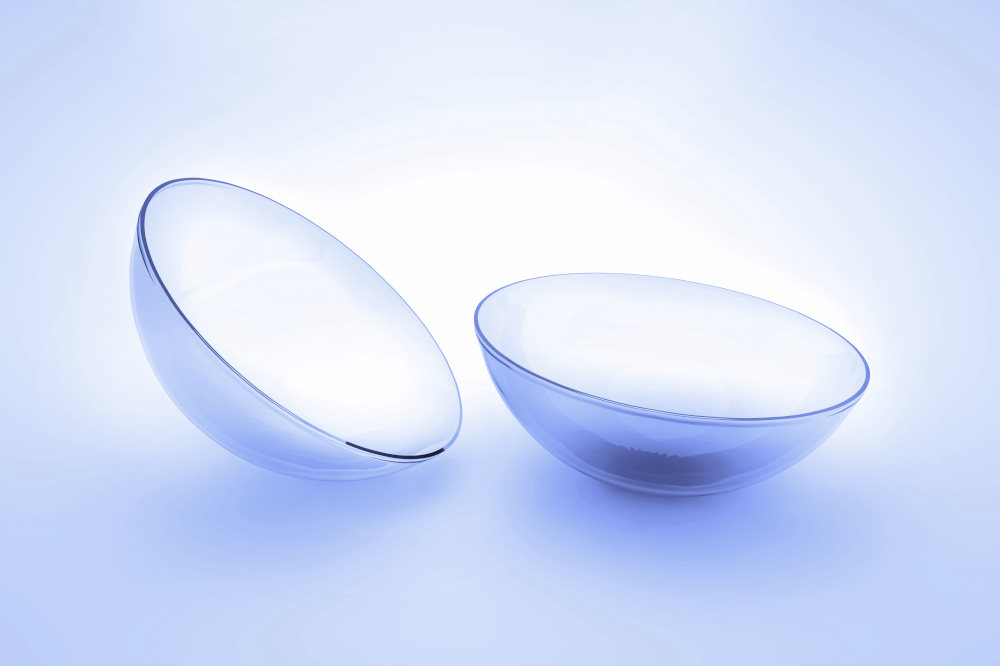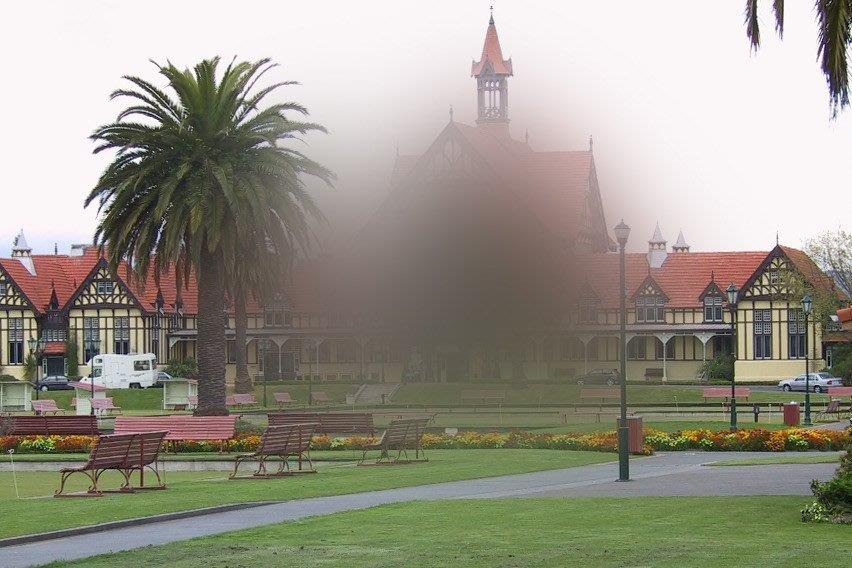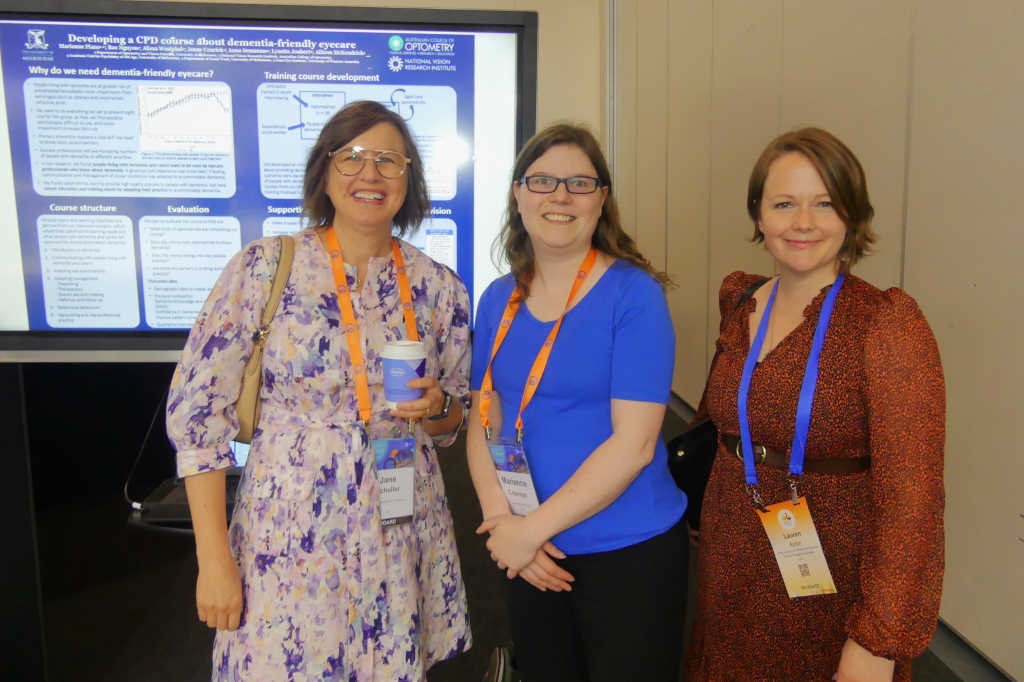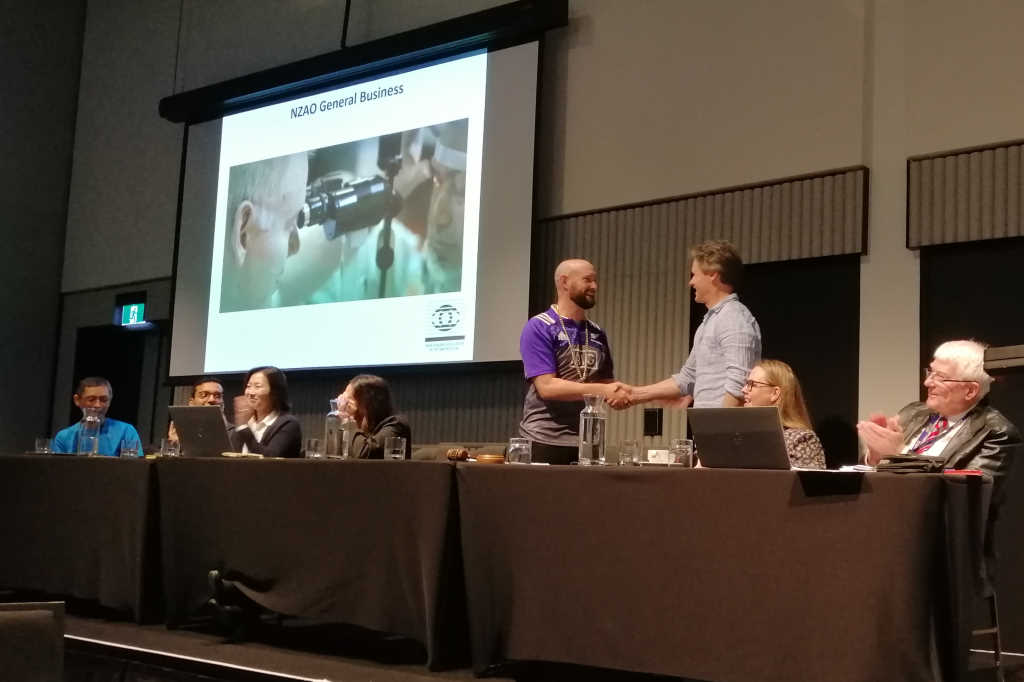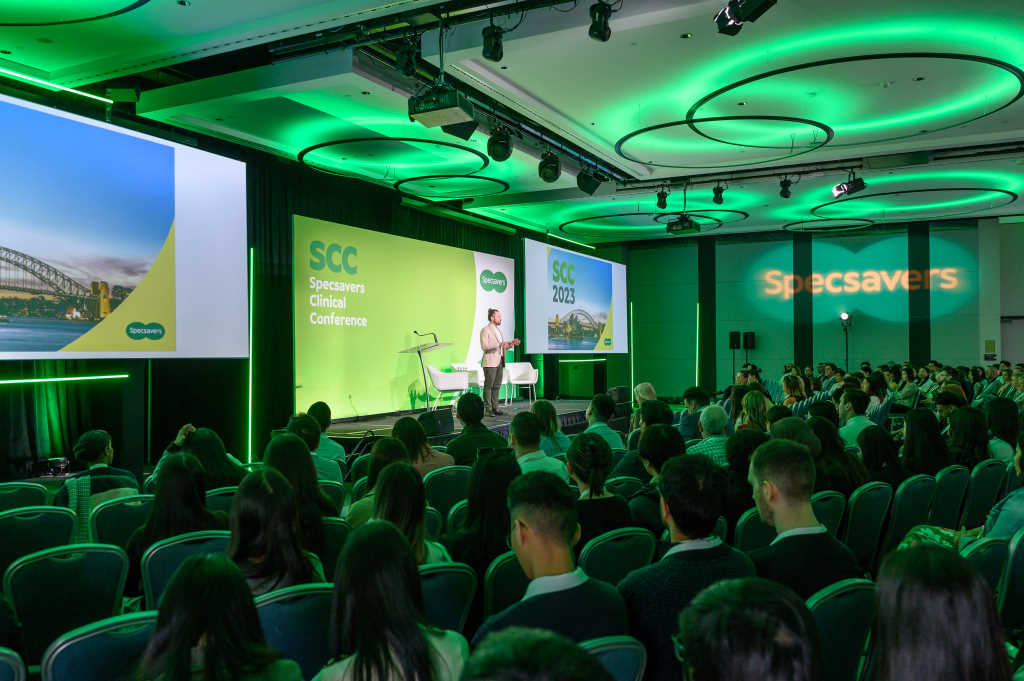Jurassic Park, CLs and a cataract
As the guest writer for this issue’s speciality contact lens forum, I thought I would tackle a problem I have encountered a few times and feel may become more common as we test an aging population.
First we have to go back, way back, to my penultimate year at University. Sitting in a lecture about the history of contact lenses, I learned all about dental technician Eugene Hirst who brought rigid contact lenses to New Zealand around the Second World War. We heard how these lenses, made of PMMA and other old materials, took off and soon became commonplace. We talked about the challenges of fitting and looking after patients with hard contact lenses, and how more modern materials had replaced them. Despite this, we were warned, we would still occasionally see patients who had been in hard contact lenses for several decades. They might even be PMMA or other old materials. These patients were known affectionately as ‘dinosaurs’.
This leads me today’s patient, a 70-year-old female - ‘LS’ - who has been in hard contact lenses for at least 40 years. LS presented to my practice as a new patient and is a true ‘dinosaur’ - not only is she a full-time wearer but she is still in PMMA. LS had noticed a reduction in vision over the past few months particularly in her right eye, and felt her contact lenses needed an update or a polish. On examination it was revealed a cataract was the underlying cause.
It makes sense that these patients who have been in contact lenses for thirty or forty years may be coming in with blurry vision more often. Even if they started lens wear in their twenties they will at least be getting into their sixties now, increasing the chance of cataract, macular degeneration and other pathologies. I discussed with LS that the cataract was blurring her vision not the contact lenses and she wanted to have this dealt with. Having been short sighted her whole life she was keen following cataract surgery to still be slightly short sighted for the convenience of reading unaided. This got me thinking about the effect PMMA has had on her cornea and the potential effect on her prescription and final cataract outcome.
PMMA and its effects on the eyes are well known to optometrists with lack of oxygen leading to oedema and corneal warpage among other things. A topography following PMMA wear shows this warpage with irregular mires and an irregular surface. This is immediately noticeable to patients who switch from their lenses into spectacles and notice blurry vision. This patient has spent every waking moment in PMMA lenses for the past 40 years with no spectacle wear and hence no obvious blur. Of course older, less oxygen permeable materials have been dying off for more cornea friendly options such as Boston XO. Even these newer materials can affect the cornea if the lens is poorly fitting or if it flexes as it ages. This change in corneal shape is of course not always bad and with new designs and materials has started the orthokeratology revolution.
Back to LS then and after removing the contact lenses my initial refraction was R -7.50/ -1.50 x 45 (6/12-) and L -5.75/ -2.00 x 155 (6/7.5-). I advised LS that for best cataract outcome she will need to cease contact lens wear and wear spectacles until her corneas stabilise. I got her back after 1 week without contact lenses and the prescription was now quite different, at R -7.50/ -4.50 x 80 (6/21) and L -4.50/ -3.00 x 160 (6/9.5+).
At this stage I wasn’t happy to prescribe spectacles so I got LS back once more a week later and things were quite similar to the week before so I gave her a pair of single vision distance spectacles. This got me thinking about when was an appropriate time to review LS and when do we expect her corneas to stabilise? Further reading made me realise the answer to this was really ‘how long is a piece of string’. A study by Wang et al1 found the average resolution time of corneal warpage was 8 weeks but this had a standard deviation of nearly 7 weeks! Based on this I got LS back 2 months later and her prescription was now R -4.00/ -4.00 x 80 (6/12) and L -4.50/ -1.00 x 80 (6/7.5-).
The end was in sight! Vision was stabilising, retinoscopy reflex was good and corneas were clear on slit lamp. To be safe I got LS back once more 1 month later and found the prescription was stable. Success! I have since referred LS for private right cataract surgery to be followed with left cataract surgery to balance any anisometropia.
There may be nothing too startling about what occurred with LS, but I think it may be a more common scenario as long time PMMA contact lens patients (dinosaurs) develop age related pathologies. To give the best surgical outcome we, as the optometrist, should be considering the stability of prescriptions and the stability of the cornea.
The options for these patients will vary with the patients’ needs. The first step which will help in the long term will be to change these patients to well-fitting newer materials before problems occur. The patient may not be keen to change from a winning formula but just as we change soft contact lens wearers into Silicon Hydrogel it seems sensible to change PMMA wearers into more modern materials. If you do end up with a patient like LS though it is worthwhile discussing with them that they will have a few months of potentially average vision to give them a long-term positive outcome. Once out of rigid lenses patients may decide to pursue spectacles (although we must warn them the prescription may change quickly) or soft contact lenses but these of course can be difficult with rigid wearers.
I would be intrigued to find out how other optometrists deal with this problem particularly for a patient concerned with the cost of this process. There doesn’t seem to be any universal answer but it does seem certain that the number of patients in rigid lenses whether it be PMMA or modern materials are increasing in age and therefore increasing in pathology. Cataracts can affect these patients and it is our job to deal with it to give them the best vision.
References
Time to Resolution of Contact Lens-Induced Corneal Warpage Prior to Refractive Surgery1 Wang, Xiaohong M.D.; McCulley, James P. M.D.; Bowman, R. Wayne M.D.; Cavanagh, H. Dwight M.D., Ph.D. CLAO Journal: October 2002 - Volume 28 - Issue 4 - pp 169-171
About the author
Guest columnist Jacob Benefield stepped in to help while our regular speciality lens contributor Alex Petty focused on establishing his new practice in Tauranga. Benefield, an optometrist based in Palmerston North, splits his time between Visique Naylor Palmer, Bruce Little Optometrists and the glaucoma clinic at Palmerston North hospital. He too has a special interest in ortho-k and fitting hard contact lenses.










